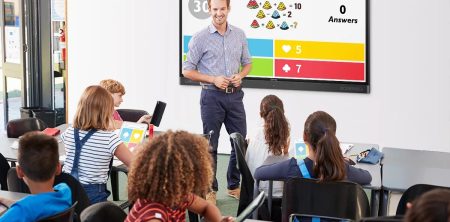In today’s digital age, innovative teachers are constantly seeking new ways to engage young learners. Among the most effective tools in their educational arsenal are kids animated shows, which offer a vibrant blend of entertainment and educational content. These animated programs have evolved significantly over the years, transitioning from simple entertainment to sophisticated learning tools that address various aspects of child development, from cognitive skills to emotional intelligence.
Modern educators recognize that children absorb information differently than adults, often learning best through visual and auditory stimulation. The colorful characters, catchy songs, and engaging storylines in quality animated content create memorable learning experiences that traditional teaching methods might not achieve alone. By incorporating these shows into their curriculum, teachers can bridge the gap between entertainment and education, making learning a more enjoyable and effective process for young students.
The integration of animated content in classrooms represents a significant shift in educational approaches. Rather than viewing television and digital media as distractions, forward-thinking educators now understand their potential as supplementary teaching tools. This change in perspective acknowledges the reality that today’s children are digital natives who respond positively to technology-based learning experiences.
Research supports this educational strategy, with numerous studies demonstrating improved retention and comprehension when lessons incorporate visual storytelling elements. For instance, concepts like basic mathematics, language acquisition, and scientific principles become more accessible when presented through the adventures of beloved animated characters. These characters often serve as relatable guides who model problem-solving strategies and positive social behaviors.
Successful implementation of animated content in educational settings requires thoughtful curation and guidance. Effective teachers don’t simply play shows as passive entertainment but rather use them as springboards for deeper discussions and activities. They might pause episodes at critical moments to ask questions, highlight important concepts, or relate the content to previously covered material. This active engagement transforms what could be passive viewing into an interactive learning experience.
The best educational animated shows are designed with developmental appropriateness in mind. Programs for younger children typically feature simpler narratives, more repetition, and direct addressing of viewers to maintain attention and reinforce concepts. As children grow, shows become more complex, introducing nuanced storylines, sophisticated vocabulary, and multi-dimensional characters that encourage critical thinking.
Cultural representation in animated content has also become increasingly important in diverse classrooms. Teachers seek out shows that reflect the backgrounds and experiences of all their students, recognizing that children benefit from seeing themselves represented in educational media. This inclusivity helps foster a sense of belonging and validates children’s identities within the learning environment.
Parents play a crucial role in this educational partnership as well. Teachers often recommend quality animated content for home viewing, extending classroom learning beyond school hours. This collaboration between educators and families creates a consistent learning environment that reinforces important concepts through repeated exposure in different contexts.
Digital literacy skills develop naturally as children engage with animated content under proper guidance. Teachers use these opportunities to discuss media consumption habits, helping students become discerning viewers who can distinguish between educational content and pure entertainment. These early lessons in media literacy lay the foundation for responsible digital citizenship in later years.
Assessment of learning outcomes remains essential when incorporating animated shows into teaching. Effective educators develop creative ways to measure comprehension and skills development resulting from these alternative teaching methods. Rather than traditional testing, they might use projects, discussions, or role-playing activities that allow children to demonstrate their understanding in engaging ways.
Professional development for teachers increasingly includes training on media integration in classrooms. Workshops and courses help educators identify high-quality animated content, develop lesson plans that incorporate these resources effectively, and assess learning outcomes appropriately. This professional support ensures that animated shows serve genuine educational purposes rather than functioning as mere time-fillers.
The production quality of educational animated content has improved dramatically, with many shows developed in consultation with child development experts, educators, and subject matter specialists. This collaboration between entertainment producers and educational professionals has resulted in programming that balances engagement with substantive learning opportunities.
Looking ahead, the relationship between teachers and animated content will likely grow stronger as technology continues to evolve. Interactive elements, augmented reality features, and personalized learning paths may soon enhance the educational potential of animated shows, offering even more sophisticated tools for classroom use. Forward-thinking educators are already exploring these possibilities, anticipating the next generation of teaching resources.
Ultimately, the most successful educational approaches recognize that children learn best when they’re genuinely engaged and enjoying the process. Quality animated shows, when thoughtfully incorporated into teaching strategies, create precisely this kind of positive learning environment. By embracing these modern tools while maintaining sound pedagogical principles, teachers continue to adapt their practices to meet the needs of contemporary learners.

